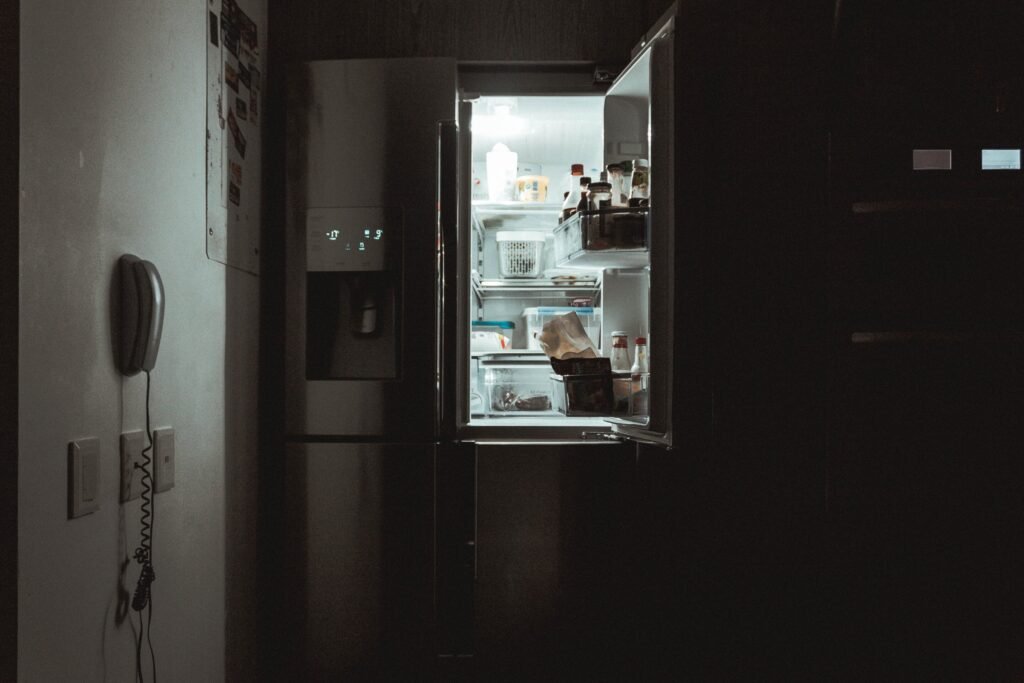The kitchen is often the heart of the home—a place where families gather and meals begin. And at the start of it all? The fridge. This is where we safely store much of our food, and as technology advances, fridges are getting smarter: being able to track inventory, suggest recipes, even displaying the news.
But of all their features, temperature remains the most critical. We rely on fridges to keep food fresh, but if the temperature isn’t right, they can do the opposite—essentially becoming cozy incubators for bacteria.
As a microbiologist, I might find that fascinating, but it’s definitely not ideal for the sausages you brought home from the farmer’s market.
When looking across many households, the average temperature in fridges is 5.3°C—just above the recommended safe range of 0–5°C (32–41°F). More concerning is how often temperatures fluctuate. Many fridges spend over half their time above that safe limit.
Some have even been found running as high as 15°C (59°F), which, in parts of the UK, is practically a warm summer’s day. At those temperatures, bacteria can multiply quickly, increasing the risk of food spoilage or even food-borne illness.
So, what’s going wrong? Part of the problem is that many fridges lack an accurate, accessible way to monitor their internal temperature. Let’s admit: most of us don’t know what the dial settings actually mean.
On top of that, every time you open the door, warm air rushes in.
The longer the door of the fridge is open, especially if you’re taking your time picking a snack, the more the internal temperature rises towards room temperature. This creates a better environment for bacteria to grow.
Keep bacteria under control
Here are some easy ways to keep your food fresh and safe:
- Avoid leaving the fridge open for too long while unpacking groceries.
- Use a rotating organizer like a lazy susan to easily find items in your fridge.
- Regularly clean the seals on your fridge door to ensure they close properly.
Different areas of your fridge have different temperatures, with the back being the coldest and the door being the warmest. Store items like milk and raw meat towards the back, while butter and drinks can go in the door.
Many modern fridges have built-in sensors, but these only show the temperature in one spot. In fact, most households never adjust their temperature settings. To be safe, place stick-on thermometers in various areas of your fridge and adjust if needed.
Avoid overcrowding your fridge to allow air to circulate properly. Items like stone fruits, tomatoes, peppers, potatoes, and honey don’t need to be refrigerated and can be stored in a cool, dry cupboard.
But temperature isn’t the only concern. Even a cold fridge can harbor hidden risks. Studies have shown that fridges can contain pathogens introduced through contaminated food or packaging.
While cold temperatures can slow bacteria growth, some bacteria like Listeria monocytogenes can survive and multiply in low temperatures. Listeria is particularly harmful to pregnant individuals and older adults and can be found in soft cheeses, smoked fish, deli meats, pre-packaged fruits, frozen vegetables, and ready-made sandwiches.
Minimize risk
To reduce the risk of contamination, follow guidelines from food safety authorities:
- Keep raw foods separate from ready-to-eat items.
- Store raw meat and fish on the bottom shelf of the fridge.


